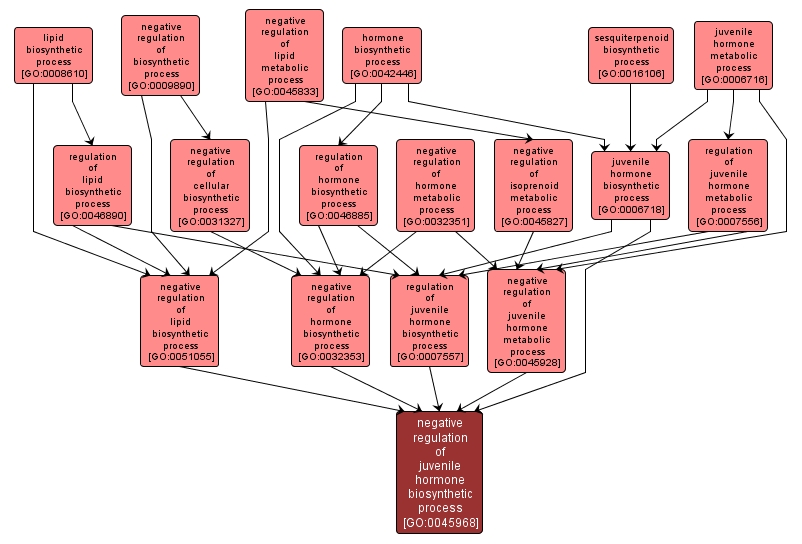GO TERM SUMMARY
|
| Name: |
negative regulation of juvenile hormone biosynthetic process |
| Acc: |
GO:0045968 |
| Aspect: |
Biological Process |
| Desc: |
Any process that stops, prevents or reduces the frequency, rate or extent of the chemical reactions and pathways resulting in the formation of juvenile hormone. |
Synonyms:
- negative regulation of juvenile hormone anabolism
- negative regulation of juvenile hormone biosynthesis
- inhibition of juvenile hormone biosynthetic process
- down regulation of juvenile hormone biosynthetic process
- down-regulation of juvenile hormone biosynthetic process
- downregulation of juvenile hormone biosynthetic process
- negative regulation of juvenile hormone formation
- negative regulation of juvenile hormone synthesis
|
|

|
INTERACTIVE GO GRAPH
|














